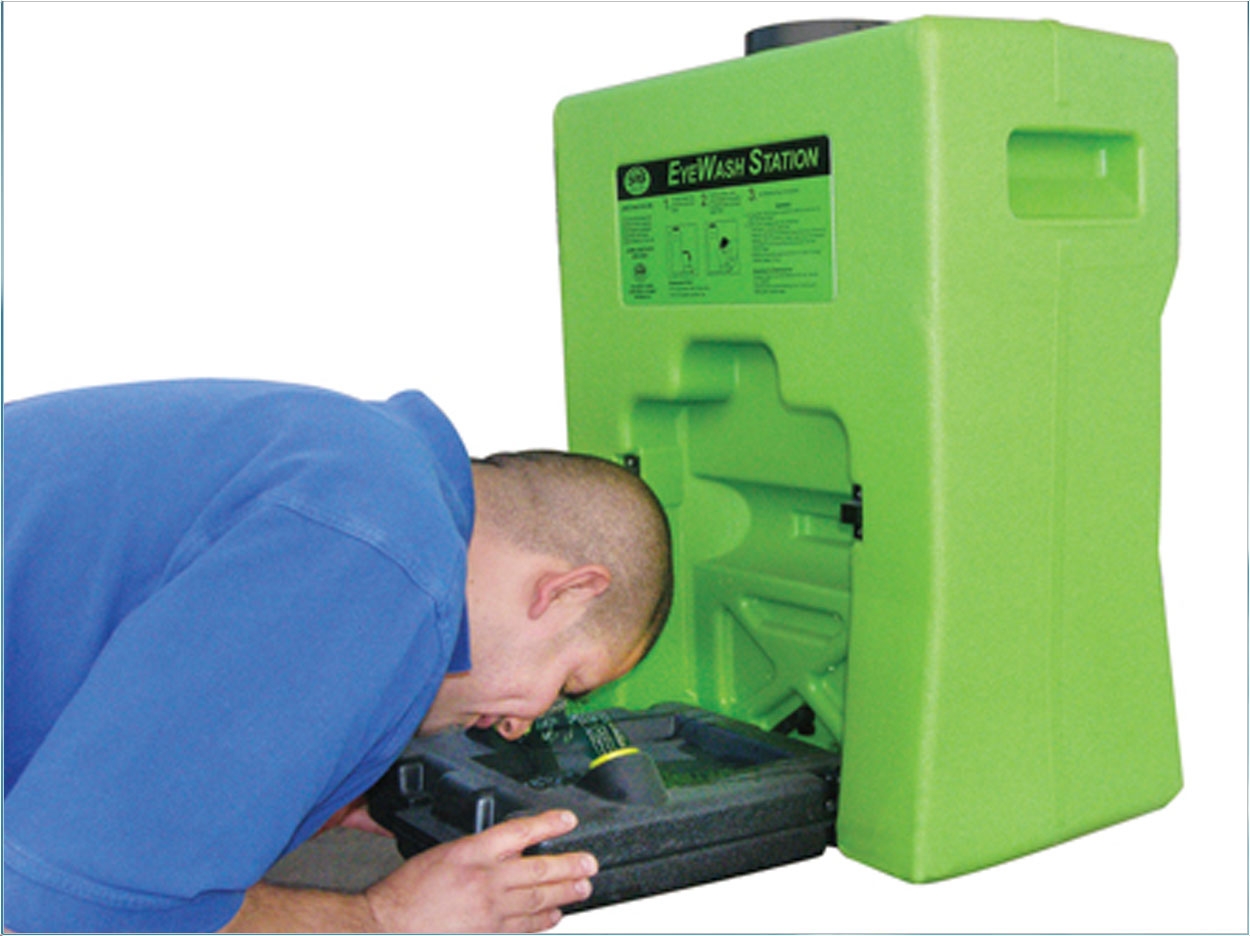
The Occupational Safety and Health Administration (OSHA) has updated its resource for maintaining eyewash stations in the dental practice. According to the organization, these stations must be maintained to prevent injury and illness to workers. The update replaces the previous bulletin, which was published in December 1986.
Eyewash stations are required in workplaces where corrosive chemicals are used, in HIV and HBV research laboratories and production facilities, and where there is any possibility that an employee’s eyes may be splashed with solutions containing 0.1% or greater formaldehyde. They also may be found in research and production laboratories, medical facilities, and other workplaces with materials that may cause injury to or infection of the eyes.
According to the American National Standards Institute (ANSI), eyewashes must be able to deliver tepid flushing fluid to the eyes at a rate of at least 1.5 liters per minute (0.4 gpm) for 15 minutes after a single movement and subsequent hands-free operation. The station can be permanently connected to a source of potable water (i.e., plumbed) or have self-contained flushing fluid. Yet improper maintenance can present health hazards that can worsen or cause additional damage to the eye.
OSHA notes that water found in improperly maintained stations is more likely to contain organisms that thrive in stagnant or untreated water and are known to cause infections. For example, exposure to Acanthamoeba can lead to Acanthamoeba keratitis, along with redness, pain, tearing, blurred vision, light sensitivity, and eye inflammation. Pseudomonas infections may cause fevers, chills, confusion, shock, and even death. Inhaling water droplets with Legionella can cause Legionnaire’s disease, a severe and fatal form of pneumonia.
Eyewash station manufacturer instructions explain how often and how long specific plumbed systems should be activated to reduce microbial contamination. Self-contained eyewash units must be maintained as well, with employers consulting the manufacturer’s instructions for maintenance procedures. This includes flushing the system and only using solutions appropriate for flushing eyes. ANSI standard Z358.1-2014 provides detailed information about manufacturers’ recommended maintenance procedures.
While it is difficult to obtain specific information on the number of incidents caused by poorly maintained eyewash stations, OSHA issued more than 1,000 citations to employers in fiscal year 2014 for failing to provide suitable facilities for quick drenching or flushing of the eyes and body where there is potential for exposure to injurious corrosive materials, the agency said.
In its update, OSHA also reminds workers about their specific rights when it comes to workplace safety. Specifically, workers have the right to:
- Working conditions that do not pose a risk of serious harm.
- Receive information and training (in a language and vocabulary the worker understands) about workplace hazards, methods to prevent them and the OSHA standards that apply to their workplace.
- Review records of work-related injuries and illnesses.
- File a complaint asking OSHA to inspect their workplace if they believe there is a serious hazard or that their employer is not following OSHA’s rules. OSHA will keep all identities confidential.
- Exercise their rights under the law without retaliation, including reporting an injury or raising health and safety concerns with their employer or OSHA. If workers have been retaliated against for using their rights, they must file a complaint with OSHA as soon as possible, but no later than 30 days.
OSHA’s InfoSheets are not standards or regulations and do not create legal obligations, the administration says. They are intended to assist employers in providing a safe and healthful workplace. The OSHA Health Effects from Contaminated Water in Eyewash Stations InfoSheet was designed to raise awareness and knowledge of potential safety and health hazards as well as how to prevent them.
For additional information about workers’ rights, employer responsibilities, workplace regulations, and other services OSHA offers, go to osha.gov. Employers and employees alike also can call 800-321-OSHA (6742).


